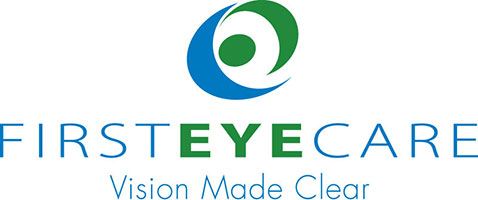Adults aren’t the only ones who need annual eye exams. In fact, pediatric eye exams are one of the most important services offered here at First Eye Care. According to industry experts, 5 to 10 % of preschoolers and nearly 25% of school-aged children have some type of vision problem. The American Optometric Association (AOA) states that infants should have their first eye exam at six months. After that initial exam, children should have an eye exam at three years old, and then again at age five or six (right before they enter kindergarten). School-aged children should have an eye exam every other year to ensure there are no vision problems present.
Many children are visual learners, which means it is important their eyes are healthy. In many cases, kids don’t realize they aren’t seeing to their full potential, which could lead to setbacks. Bringing your child into First Eye Care for a pediatric eye exam is the best way to help your kid achieve optimal health and wellness. These early eye exams are important because they will make sure your child has these basic visual skills:
- Near vision
- Distance (far) vision
- Binocularity skills
- Eye movement skills
- Focusing skills
- Peripheral vision and awareness
- Eye/hand coordination

Eye Exams for Infants
Babies develop their vision skills gradually, so it is important to have one of our experienced optometrists check in and make sure they are developing at a normal pace. When you come into First Eye Care for an eye exam for your infant, you can expect the following tests to be performed:
- Tests of pupil responses
- Fixate and follow test to determine if your newborn is able to fixate on an object and follow its movements
- Preferential looking, which uses cards to attract the gaze of the infant to test their vision capabilities
Eye Exams for Pre-School-aged Children
Here at First Eye Care, we can test the eyes of preschool-aged children. Some of the eye tests we will perform on young children include:
- LEA symbols, which is an eye test that uses charts with symbols instead of letters (symbols include an apple, house, square, and circle)
- Retinoscopy, which is a test that shines a light into the child’s eye to see how it reflects from the retina
- Random Dot Stereopsis, which uses a dot pattern to observe the capability of the eyes of the child
There are several different types of eye problems and conditions that affect children that can be caught during a pediatric exam, including:
- Lazy eye
- Strabismus (misalignment of the eyes)
- Convergence insufficiency
- Focusing problems
- Eye teaming problems



